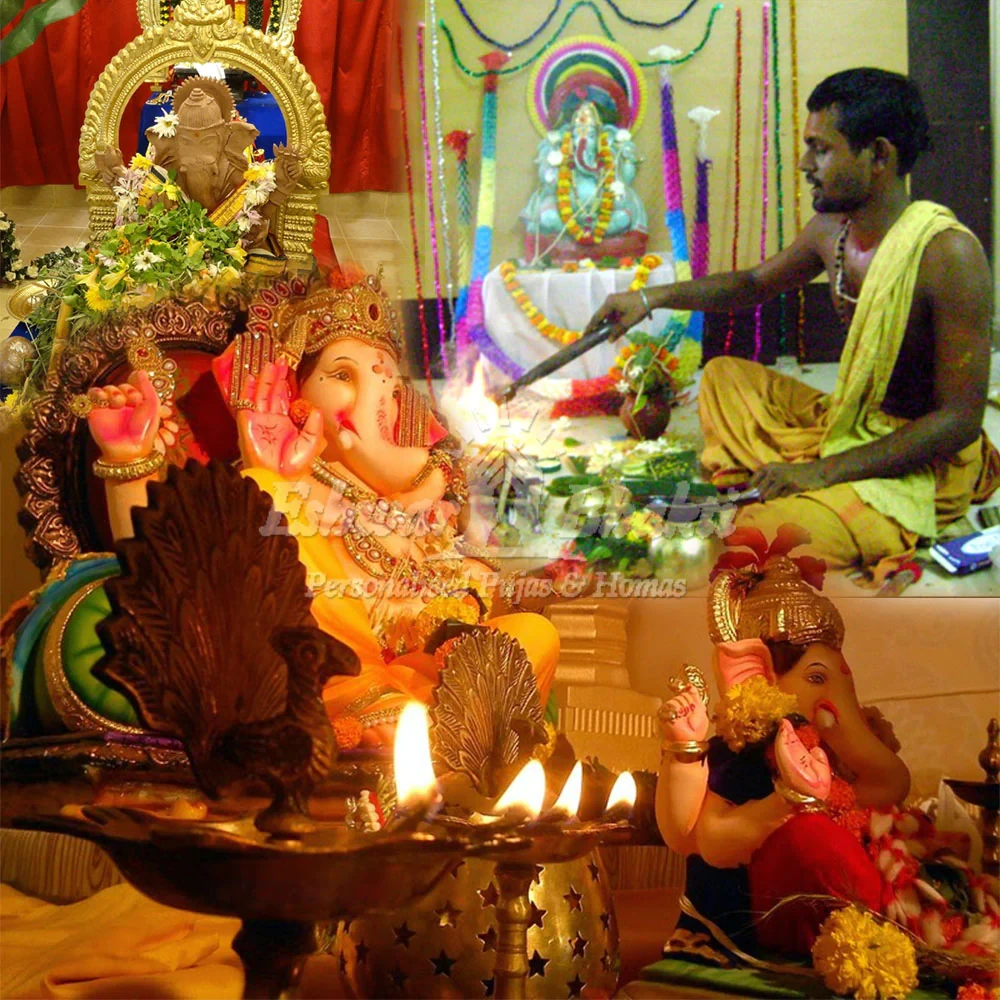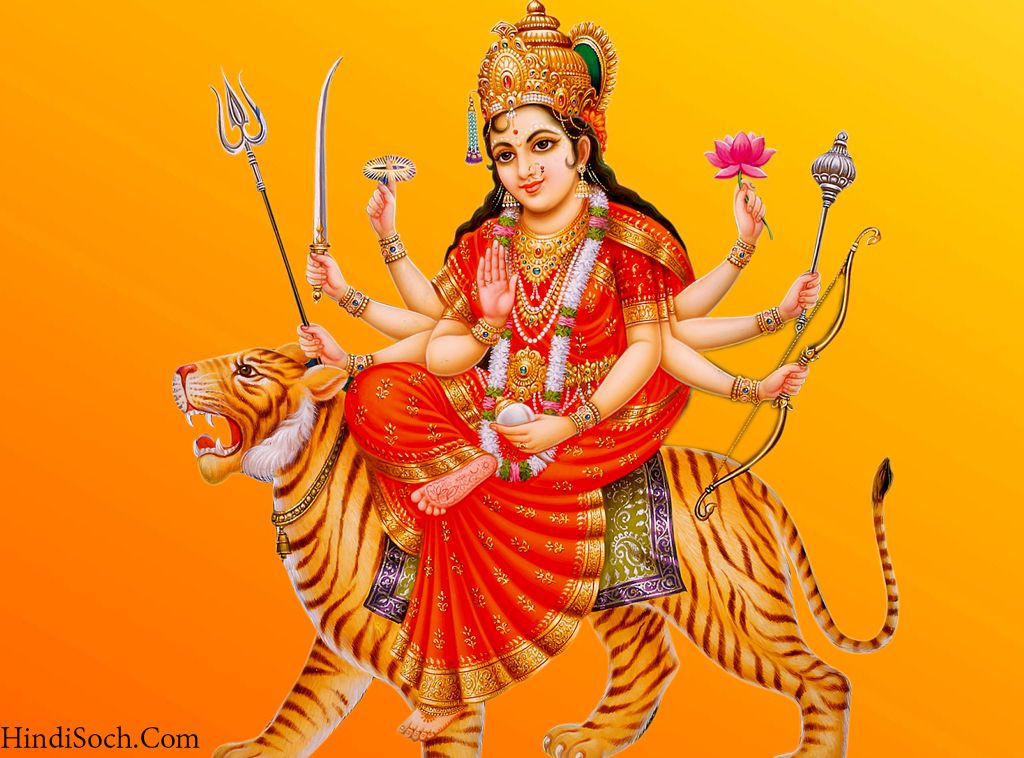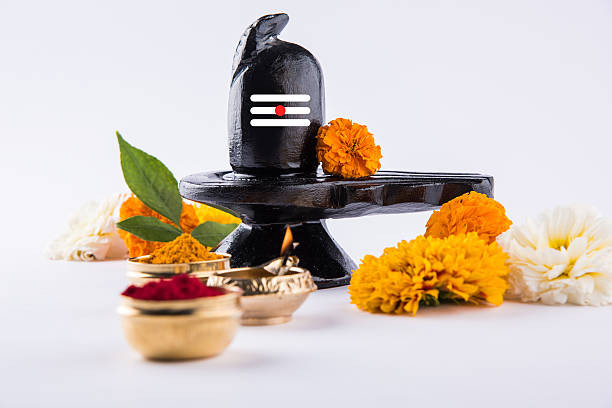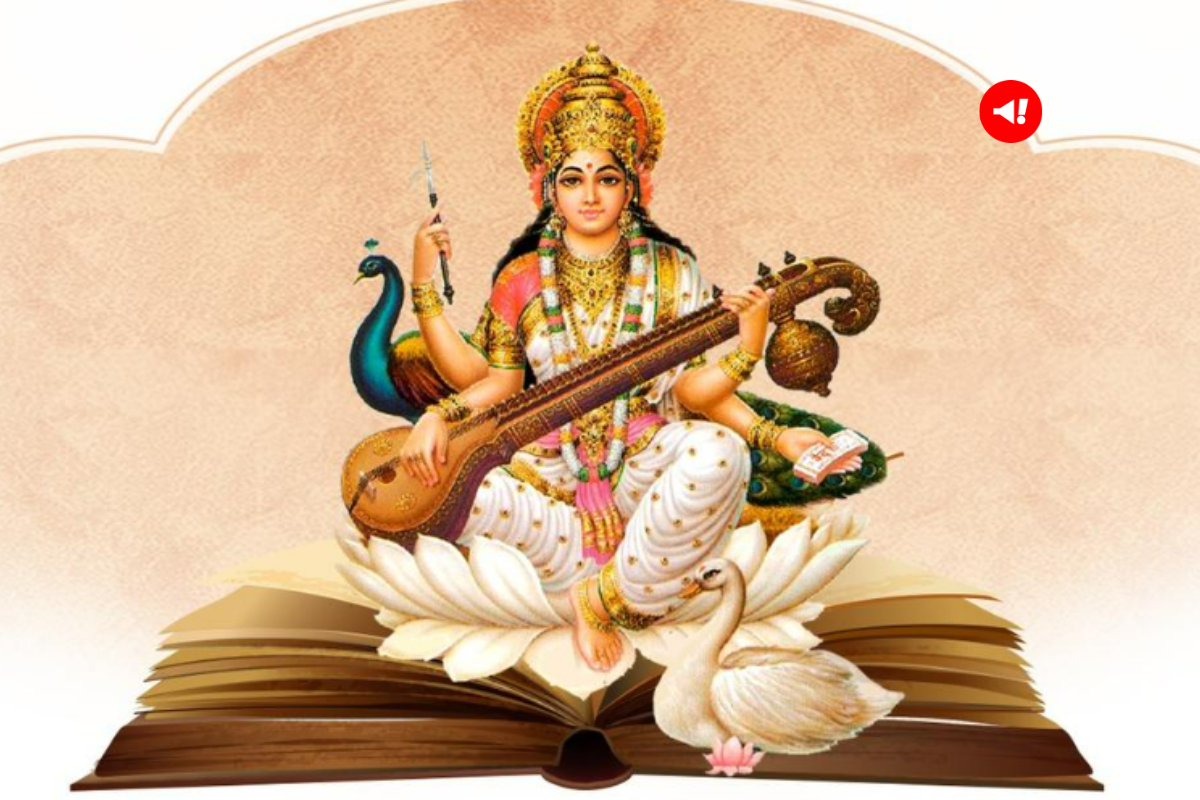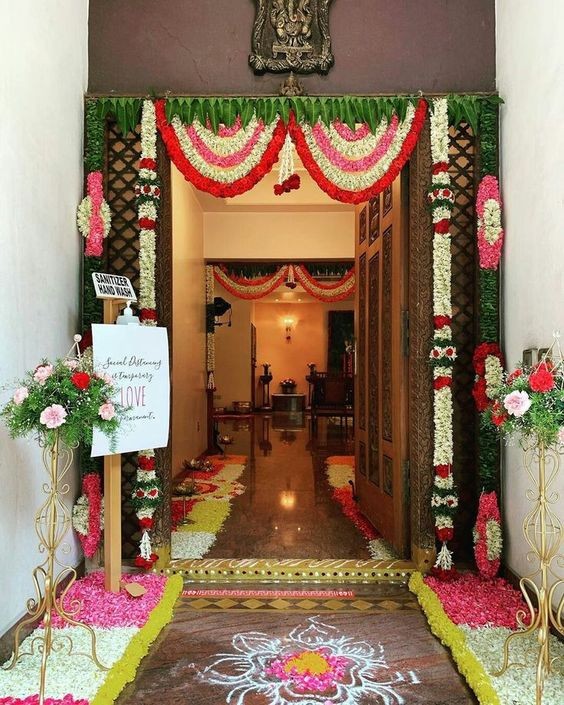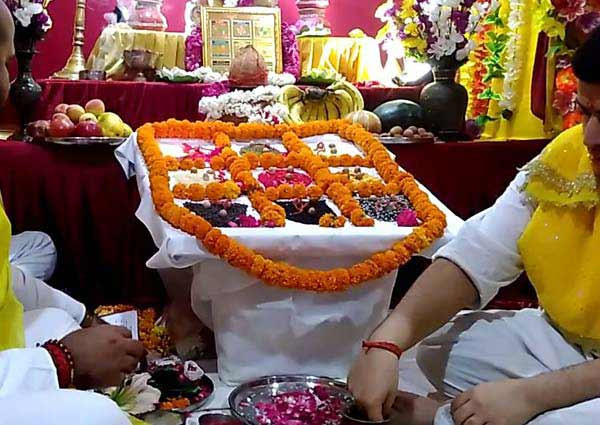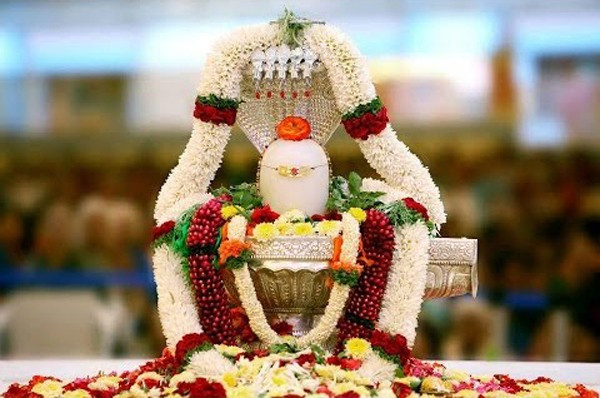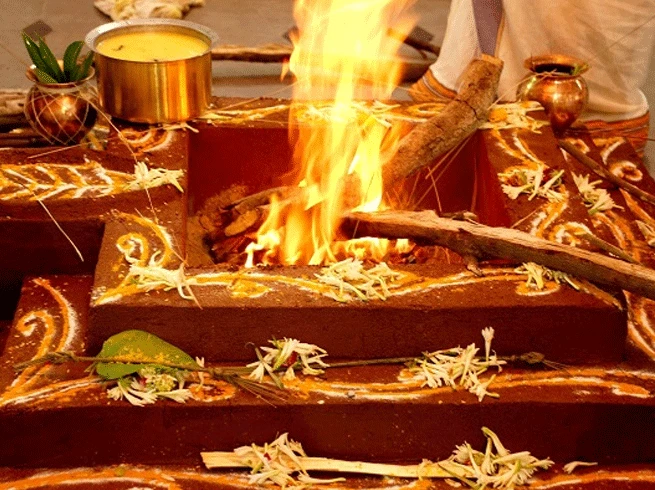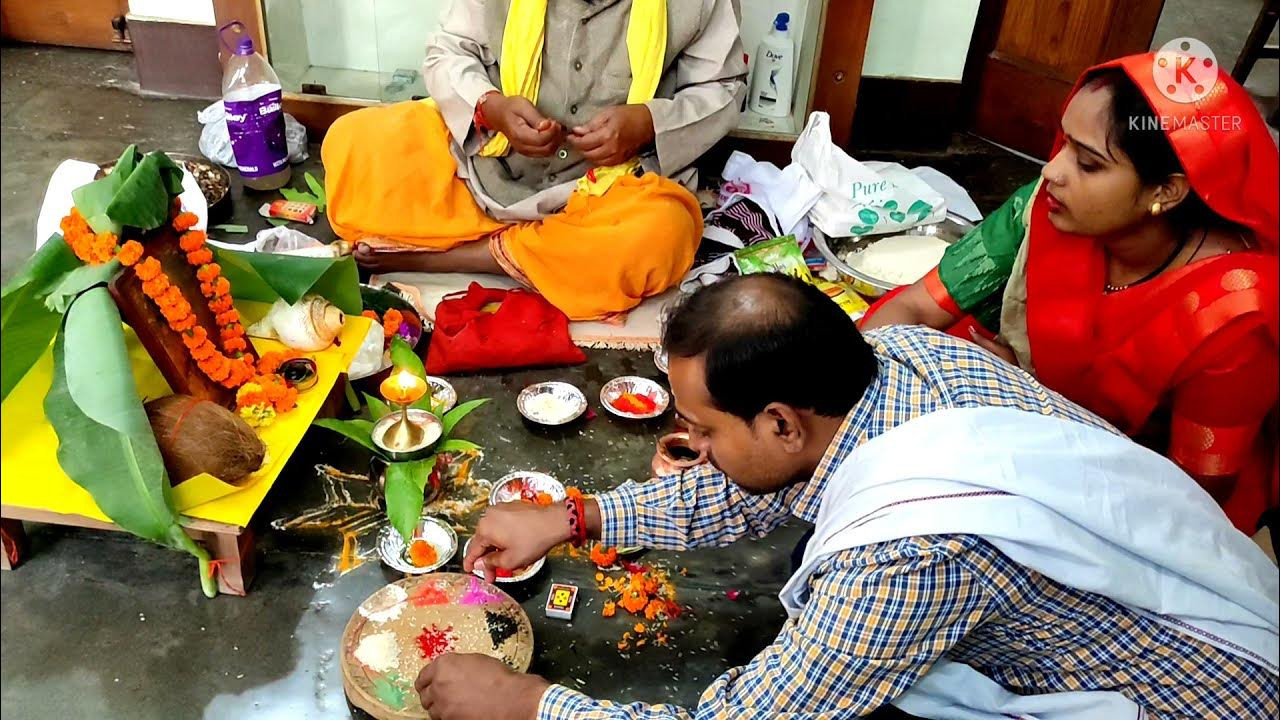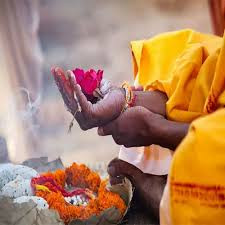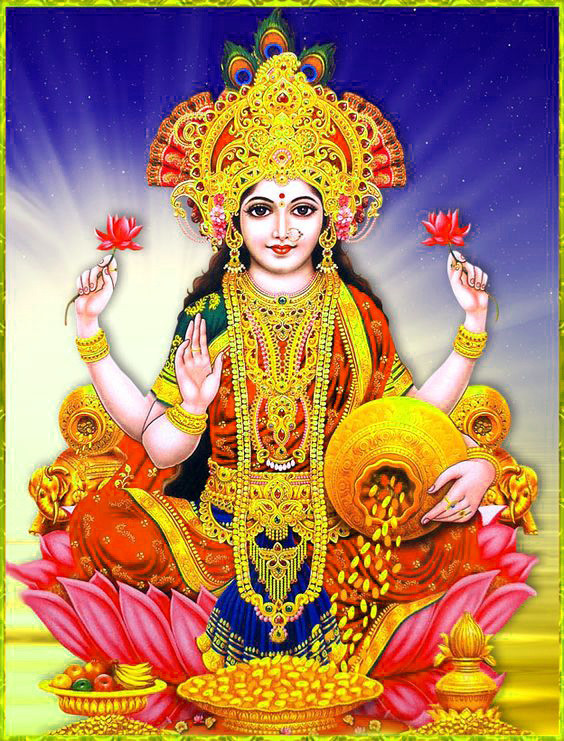
Lakshmi Puja.
Laxmi Puja, also known as Diwali Puja or Deepavali Puja, is a Hindu religious ceremony dedicated to the worship of Goddess Lakshmi, the goddess of wealth, prosperity, and good fortune. It is one of the significant festivals in Hinduism and is celebrated with great enthusiasm and devotion. Here are some key aspects of Laxmi Puja:
1. Timing:
- Laxmi Puja is typically performed during the Hindu month of Kartika, on the night of Amavasya (new moon), which coincides with the Diwali festival. The exact date may vary each year.
2. Purpose:
- The primary purpose of Laxmi Puja is to seek the blessings of Goddess Lakshmi for prosperity, wealth, and abundance. Devotees also pray for the well-being and success of their families and businesses.
3. Preparations:
- Before the puja, homes and workplaces are thoroughly cleaned and decorated to welcome the goddess. Rangoli (colorful patterns made on the ground), lamps, and diyas are lit to create a festive atmosphere.
4. Puja Items:
- The following items are commonly used during Laxmi Puja:
- Idol or Image of Goddess Lakshmi: The central focus of the puja.
- Diya or Oil Lamp: Lit to symbolize the dispelling of darkness and the victory of light.
- Incense Sticks and Camphor: Used to create a fragrant and pure environment.
- Fruits and Sweets: Offered as prasad (blessed food) to the goddess.
- Flowers: Used for adorning the deity and as offerings.
- Coins and Currency Notes: Placed in front of the deity as a symbol of wealth.
- Rice and Kumkum (vermilion): Used for rituals and tilak application.
5. Rituals and Puja Procedure:
- The puja begins with the worship of Lord Ganesha, the remover of obstacles.
- Devotees then invoke Goddess Lakshmi with prayers and mantras.
- The idol or image of Goddess Lakshmi is bathed with water, milk, honey, and other auspicious substances in a ritual known as Abhishekam.
- Devotees offer flowers, fruits, sweets, and other items to the goddess.
- The diya or oil lamp is circled in front of the deity, symbolizing the cyclical nature of life.
- Mantras dedicated to Goddess Lakshmi, such as the Shri Sukta, are recited.
- Arti (ritual of waving lamps) is performed with the singing of hymns praising Goddess Lakshmi.
6. Charity and Giving:
- It is customary to give to the less fortunate on Laxmi Puja, symbolizing the sharing of one's wealth and blessings with others.
7. Cultural Significance:
- Laxmi Puja is not just a religious ritual but also holds cultural significance. It marks the triumph of light over darkness and good over evil.
8. Family Celebration:
- Laxmi Puja is often a family affair, with family members coming together to perform the rituals and share in the festivities.
Laxmi Puja is an occasion of joy, gratitude, and reflection on the importance of wealth, prosperity, and the values associated with them. It is celebrated with fervor and is considered a time for renewal and new beginnings.
What you will get:
- The items and arrangements for Lakshmi Puja can vary based on personal preferences, regional customs, and family traditions. However, here's a general list of items that are commonly provided or used during Lakshmi Puja:
- 1.Brass Idol or Image of Goddess Lakshmi: The central focus of the puja is the idol or image of Goddess Lakshmi. Devotees often choose a small murti (idol) or a framed picture for the puja.
- 2.Brass Diya or Oil Lamp: Lighting diyas or oil lamps is a significant aspect of Lakshmi Puja, symbolizing the dispelling of darkness and the welcoming of light and prosperity.
- 3.Incense Sticks and Camphor: Fragrance is an integral part of the puja. Burning incense sticks and camphor creates a pleasant and pure atmosphere.
- 4.Fruits and Sweets: Fresh fruits and sweets are offered as prasad (blessed food) to Goddess Lakshmi. These are considered symbols of abundance and sweetness in life.
- 5.Flowers: Flowers are used for adorning the deity and as offerings. Marigolds and lotus flowers are often considered auspicious.
- 6.Coins and Currency Notes: Placing coins and currency notes in front of the deity symbolizes wealth and prosperity. It signifies the devotee's offering of financial resources to the goddess.
- 7.Rice and Kumkum (vermilion): Rice and kumkum are used for various rituals and tilak application during the puja.
- 8.Ghee or Oil: Ghee or oil may be used for the lighting of diyas and for offering in certain rituals.
- 9.Saree or Cloth: A new saree or piece of cloth may be offered to the goddess as a symbol of devotion and prosperity.
- 10.Puja Thali Set: A decorative plate or thali is often used to arrange and carry the items for the puja, such as diya, incense, fruits, and flowers.
- 11.Mangal Sutra and Bindis: Some devotees offer mangal sutra (a sacred thread worn by married women) and bindis (decorative forehead marks) to the goddess.
- 12.Rangoli: Creating colorful rangoli patterns at the entrance of the home is a common tradition during Lakshmi Puja. It is believed to invite positive energy and prosperity.
- 13.Sweets and Prasad: Special sweets, such as ladoos or kheer, may be prepared and offered as prasad. These are later distributed among family members and guests.
- 14.Havan (Fire Ritual): In some traditions, a havan or fire ritual is performed during Lakshmi Puja. Devotees make offerings into the sacred fire with specific mantras.
- 15.Red Cloth: Red is considered an auspicious color, and using a red cloth to cover the puja space or the idol of Goddess Lakshmi is a common practice.
- It's essential to note that while these are common items associated with Lakshmi Puja, the specific items and rituals may vary based on individual preferences and regional customs. Devotees may also include additional items or conduct specific prayers and rituals based on their family traditions and personal beliefs.
Benifits of the Package:
- Devotees believe that performing Lakshmi Puja with sincerity and devotion can bring various spiritual and material benefits. While the primary focus is on seeking the blessings of Goddess Lakshmi for wealth and prosperity, the puja is also associated with broader well-being. Here are some perceived benefits of Lakshmi Puja:
- 1. Wealth and Prosperity: Lakshmi Puja is primarily performed to invoke the blessings of Goddess Lakshmi, the goddess of wealth. Devotees seek financial prosperity, abundance, and success in their endeavors.
- 2. Material and Financial Blessings: Devotees believe that by performing Lakshmi Puja, they can attract material blessings, financial stability, and a thriving business or career.
- 3. Business Success: Business owners often perform Lakshmi Puja to seek the goddess's blessings for success, growth, and prosperity in their enterprises.
- 4. Career Advancement: Professionals and individuals seeking career growth pray for the goddess's blessings to advance in their professions and achieve success.
- 5. Removing Financial Obstacles: Lakshmi Puja is believed to remove financial obstacles and blockages, creating a path for monetary gains and stability.
- 6. Spiritual Growth: While the puja is associated with material well-being, it is also seen as a spiritual practice. Devotees seek inner wealth, wisdom, and spiritual growth.
- 7. Harmony in Family: Lakshmi Puja is performed for the overall well-being and harmony of the family. Devotees seek blessings for unity, peace, and happiness within the household.
- 8. Generosity and Charity: Devotees believe that the blessings of Goddess Lakshmi inspire them to be generous and engage in acts of charity, sharing their wealth with those in need.
- 9. Removal of Negative Influences: The puja is thought to remove negative influences and energies that may hinder prosperity and well-being.
- 10. Fulfillment of Desires: Devotees pray for the fulfillment of their sincere wishes and desires, seeking the goddess's grace in achieving their goals.
- 11. Cleansing of Karma: Lakshmi Puja is believed to have a purifying effect on an individual's karma, bringing positive energy and auspiciousness.
- 12. Success in Investments: Individuals involved in financial investments may seek the goddess's blessings for successful ventures and profitable returns.
- 13. Positive Energy at Home: The puja is performed to bring positive vibrations and energy to the home, creating a conducive environment for overall well-being.
- 14. Protection from Financial Loss: Devotees believe that invoking the blessings of Goddess Lakshmi offers protection from financial losses and economic downturns.
- 15. Joy and Contentment: Ultimately, devotees seek the blessings of Goddess Lakshmi to experience joy, contentment, and a sense of fulfillment in their lives.
- It's important to note that these perceived benefits are rooted in religious and cultural beliefs. While the spiritual aspects are emphasized, individuals may also seek practical outcomes and positive changes in various aspects of their lives through the practice of Lakshmi Puja.
Service Availability
- Sunday 08:00 AM - 02:00 PM
- Monday 08:00 AM - 02:00 PM
- Tuesday 08:00 AM - 02:00 PM
- Wednesday 08:00 AM - 02:00 PM
- Thursday 08:00 AM - 02:00 PM
- Friday 01:00 AM - 05:30 AM
- Saturday 01:20 AM - 12:40 PM

